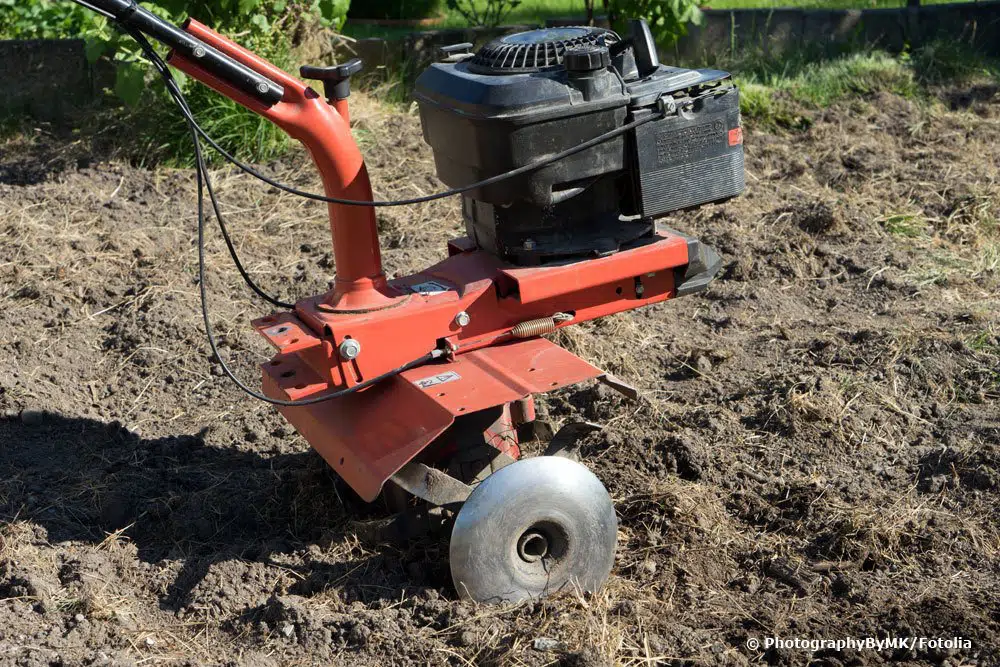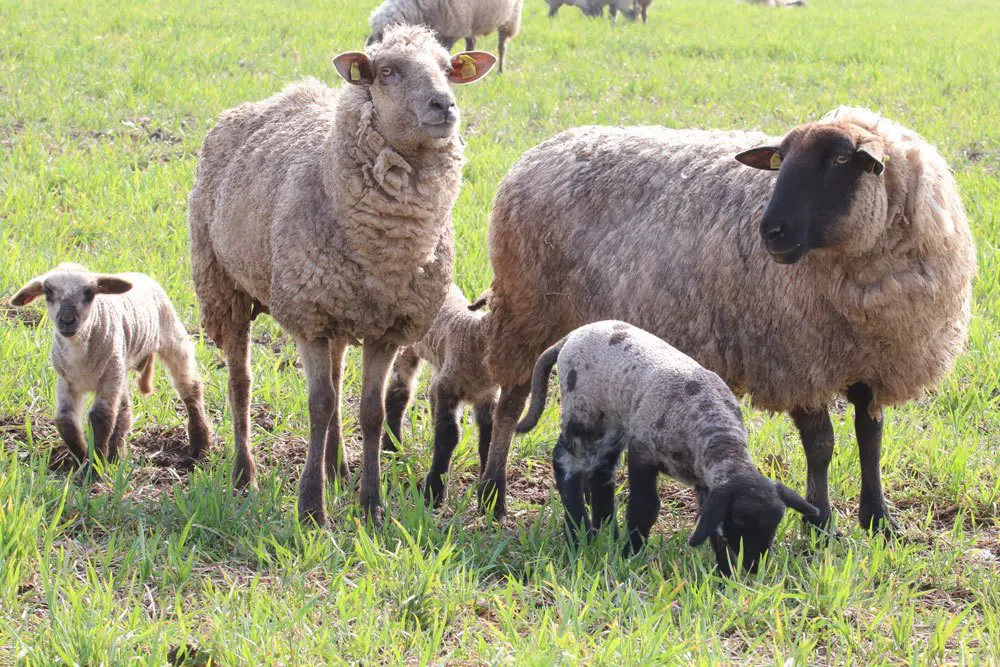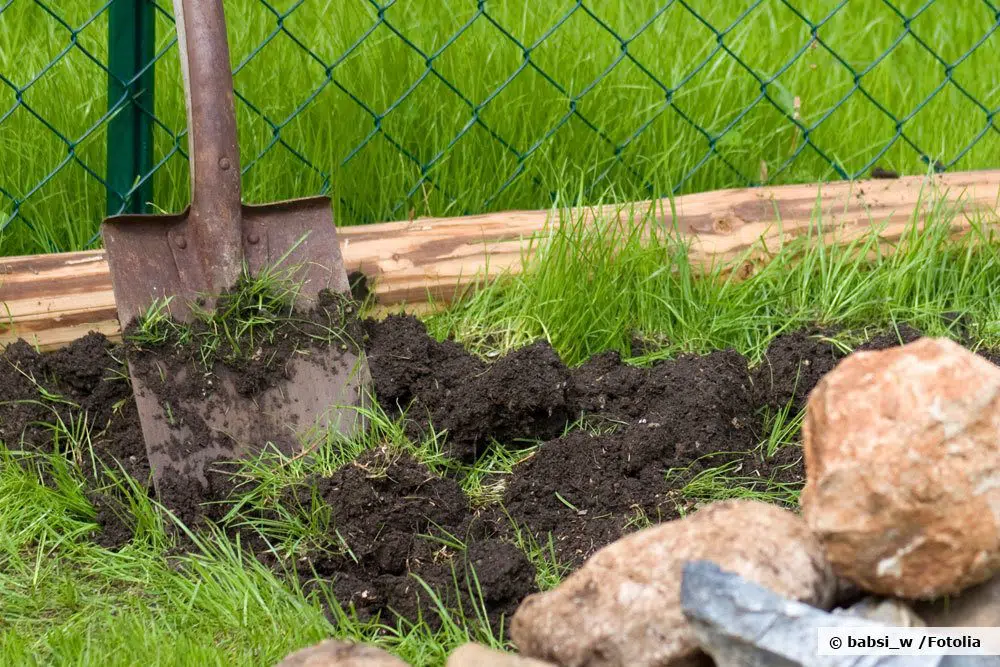Reasons to remove an existing lawn are countless. Whether it’s to create a patio, a vegetable patch, or simply to replace a weed-infested lawn with new, lush greenery.
Here you will learn everything you need to know about the possible ways to get rid of a lawn. In addition, we will tell you how to remove the sod step by step in the most common method of work and create a good foundation for all subsequent work.
Contents
Remove turf
There are several ways to remove grass easily, quickly and thoroughly. Depending on the local conditions, time frame and also technical requirements, one or the other variant can score with its respective advantages.
Note: If one follows the explanations of landscape gardeners, do-it-yourself forums or even classic guidebooks, the multitude of variants at first seems hardly manageable.
On closer inspection, however, all the individual approaches can be reduced to a handful of methods, each of which differs strikingly in the type of approach it takes to eliminate the sod.
A distinction is made between three different variants for the removal of turf and root layer:
- Mechanical methods
- Chemical methods
- Biological methods
If one looks at the individual methods in detail, however, there are further differences beyond the categorizations already made, which even within one category open up significantly different orientations and possible applications.
Note: Some of the methods presented seem almost comical at first. Especially the use of tarpaulins or animals seems rather strange for the home lawn.
However, certain general conditions regarding the timeline or even the available possibilities in individual cases may mean that these methods should not be completely dismissed out of hand.
Mechanical methods
In this case, the removal of grass and roots is carried out by cutting, lifting, peeling or other methods with the aid of classic mechanical tools. Whether it is “only” a spade, or even a complex machine with its own drive, is initially irrelevant.
Cutting the sod
When cutting the sod, a standard garden spade is used first and foremost. It is then used to divide the grass into manageable pieces.
A kind of checkerboard pattern is well suited for this. Starting from one side, the pieces divided in this way can then be easily loosened between the soil and the root layer by piercing with the spade, removed and disposed of.
| Required tools | Time required | Advantages | Disadvantages |
| Spade Bucket or wheelbarrow Auxiliary means for disposal (car + trailer etc.) | high, because pure manual work | Immediate control of the success after each piece of turf possibleeven in difficult terrain conditions well implementablelow costshardly any noise development | High time expenditure Low area output per hour |
Digging up
Digging up the lawn is a simple but time-consuming activity. Similar to the autumn digging of the kitchen garden, it involves dividing the lawn cover into manageable pieces and turning them over with the grass facing down.
By cutting off the roots from the water supply, as well as depriving them of light and air, the grass plants die over time.
| Required tools | Time required | Advantages | Disadvantages |
| Spade | high, due to purely manual activity and subsequent waiting time until die-off | No disposal requiredLow material consumptionLow noise generationNearly cost-neutral | No fully guaranteed successindividual grasses can grow through upturned soilhigh waiting time for grass to die off |
Stripping with mechanical assistance
So-called lawn peelers are motor-driven machines that can be used to remove the turf from the ground with little effort and at a high working speed.
Depending on the machine, this is done in pieces, or as continuous strips, which can then be quite easily loaded and transported away for disposal.
| Required tools | Time required | Advantages | Disadvantages |
| Lawn peelerWheelbarrow or bucket Car + trailer for waste disposal | low due to use of machines | high area performance low effort suitable for large areas of lawn | Noise generation due to equipment high financial outlay not very suitable in unfavorable terrain conditions or manual reworking necessary |
Tip: Machines can usually be borrowed well for a short time and for little money in the DIY store. This means that there is no need to make an expensive purchase of machines that are no longer required later.
Digging up with machine support
With the help of a power hoe, the lawn is torn up, chopped up and then dug under. Similar to manual digging, here too the grass is cut off from its water supply and killed by depriving the soil of light and oxygen.
| Required tools | Time required | Advantages | Disadvantages |
| Motor hoe manual tools, such as stretching or hoe for finishing | Relatively low Depending on postprocessing, however, high effort in terms of time possible | High area outputNo disposal requiredLittle supply of virgin material required | Risk of not completely killing the turf |

Chemical methods
In this process, the plant is not eliminated mechanically. Instead, the lawn is killed in its entirety through the use of chemical substances.
However, depending on the planned further procedure, this chemical method may be followed by the need for additional steps, as the dead grass initially remains in place.
Plant killers or even special lawn killers are chemical substances that can be used to target the grass and cause it to die.
Once applied, the toxins are absorbed into the plant with the water and develop their destructive effect there independently.
| Required tools | Time required | Advantages | Disadvantages |
| Lawn killing agent Protective clothing (goggles, gloves)Watering can or sprayer | Working process very low subsequent but high waiting time until complete development of effect | low workload high effectiveness no compulsory disposal necessary | High load on soil Danger of affecting neighboring vegetation Very specific requirements for effectiveness (temperature, precipitation, etc.) |
Biological methods
These methods specifically apply normal biological processes to stop the growth of the grass sod and in the process specifically cause the turf to die.
However, these approaches are usually more tedious to implement and at the same time less “radical” than other methods.
Cover
Cover the lawn. For example, using a tarp, turf can be covered in a few simple steps. The deprivation of light and air, as well as the accumulated heat underneath, will cause the lawn to die over time. The separation from the natural water supply does the rest.
| Required tools | Time required | Advantages | Disadvantages |
| Tarpaulin impermeable to light and airMaterial for securing the position due to blowingTools for finishing (hoe, spade, etc.) | low but very high time required for waiting time until the effect occurs | low work effort no use of chemical substances for killing | lengthy process multiple repositioning of the tarpaulins necessary for large areas, thus low area output |
Intensive grazing
The consequences of intensive grazing for meadows can be observed in many cases. However, this can also be used to deliberately eliminate grassy areas. Sheep and goats in particular are not very choosy in this respect. They consume not only grass blades, but usually also the entire above-ground root areas at the same time. As a result, the turf then dies irretrievably during intensive grazing. Thus, a lawn can be removed in a “natural” way.
| Required tools | Time required | Advantages | Disadvantages |
| Sheep or goats with necessary infrastructure for care and maintenance | up to several weeks or even a few months. | very natural approach without the use of chemical substances nutrient supply from animal droppings | Lengthy process Uniformity only rarely given depending on the area, not feasible due to animal husbandry |

Attention: Whenever the grass is not removed but killed, the question subsequently arises whether the dead plants should be worked under or removed anyway. No conclusive answer can be found on this. This is because the follow-up measures depend heavily on the future use. Depending on the decision, however, additional effort may be required.


